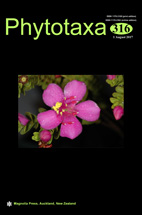Abstract
Dematiopleospora fusiformis sp. nov., isolated from a decaying upright stem of Achillea millefolium (Asteraceae) in the Rostov Region of Russia is described herein based on morphology and ITS, LSU and SSU rRNA sequence based analyses. The new taxon is similar to D. mariae, the type species of Dematiopleospora, and shares similar features such as unilocular ascomata with brown setae in the ostiole, cylindrical asci and fusiform, muriform ascospores. However, D. fusiformis differs from the type and other species in Dematiopleospora in having light brown and larger ascospores. Maximum likelihood and Bayesian inference analyses reveal that our new taxon belongs to the family Phaeosphaeriaceae and is nested in between Dematiopleospora mariae and D. cirsii with high support. A comparison with other similar species also points out to other morphological differences that segregates D. fusiformis. Phylogenies also indicate that the affinities of two other Dematiopleospora species (viz. D. luzulae and D. alliariae) are rather ambiguous. Although the latter clearly fits within the Phaeosphaeriaceae, they are phylogenetically distant from all other Dematiopleospora strains that belong to this genus and in addition their relationships to other taxa are not supported. Further taxonomic studies are warranted to clarify their morpho-phylo taxonomy. Dematiopleospora mariae, D. cirsii and D. fusiformis could be treated as Dematiopleospora sensu stricto.

